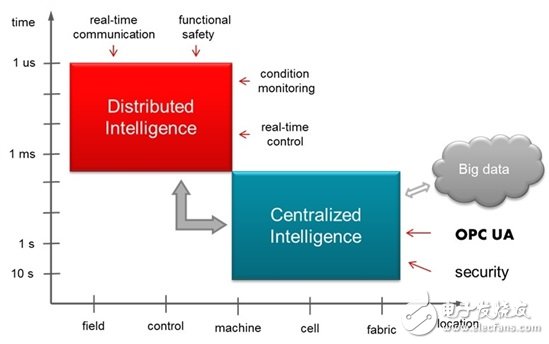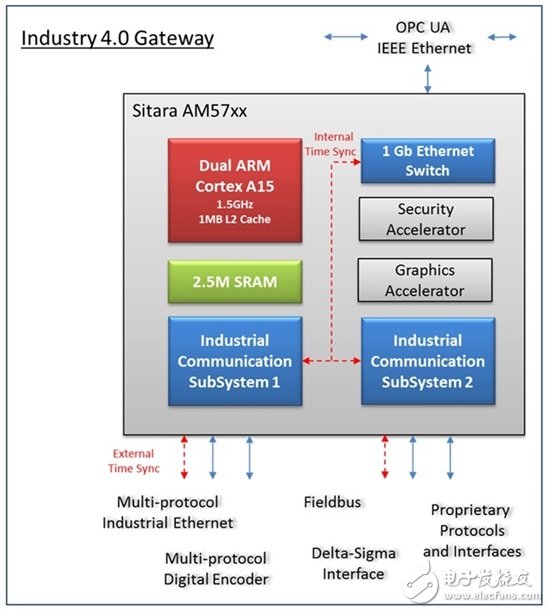As an automation field, are you ready for Industry 4.0?
As a practitioner in the field of industrial automation, I have seen Industry 4.0 appear in my life in different ways: media coverage, user meetings, and other conversations with everyone, including engineers and CEOs. However, most of the books and publications related to it currently make me more confused, and I have not told me why. In this post, I want to share with you some of my real thoughts about the implementation of the Industry 4.0 framework—and what makes the successful deployment of Industry 4.0 so long.
Who needs to use Industry 4.0, is it sacred?
Being competitive in manufacturing requires continuous improvement and improvement of the production process. Manufacturers can use information technology (IT) to dramatically increase efficiency and flexibility. A transparent and real-time understanding of the product lifecycle can help manufacturers build the backbone of the Industry 4.0 framework. Running an analysis in a big data cloud can help improve this process.
This high-level description raises a key question:
Is it necessary to store all data from the field level in a big data cloud for analysis?
Processing of input/output (IO) data from the production floor is too fast for big data analysis. Figure 1 shows the processing level during the cycle time. Industrial communication and control used in factory automation can be affected by cycle times as low as 31.25 μs. Product and device position data is captured every 10μs. Oversampling current measurements can even be less than 1μs of sampling period. Fast Fourier Transform (FFT) analysis of current and position measurements (for harmonic detection) can only be performed locally. The intelligent application of real-time applications in the field remains inside the I/O device and is not processed in the big data cloud.

Figure 1: Intelligence within factory automation
The main reason for distributed intelligence is the lack of real-time deterministic communication of IT. Standard Ethernet and wireless Ethernet are "best effort" communications that do not guarantee real-time delivery within the network. The Ethernet protocol foresees data retransmissions where data cannot be delivered within the expected time window. We have all encountered situations where the Internet is running at a lower than expected speed. This Internet's uncertain operating state requires separation of real-time communications from field-level controls and IT-based communications.
Industry 4.0 Gateway is real
The Industry 4.0 Gateway uses a higher level of functionality in the manufacturing process to connect many of the proprietary interfaces at the field level. Any access point for IT-based communications requires a communication standard such as the Open Platform Communications Unified Architecture (OPC UA), which has all the components needed for transparent and secure inter-machine communication. While real-time Ethernet synchronizes I/O with less than 100 ns of jitter, communication at the IT level has synchronization accuracy in the range of seconds.
In order to observe events within the entire plant production system, the time stamp accuracy in the millisecond range is well suited to the needs. In real-time, in the context of factory and other product lifecycle elements, real-time is in seconds.
Figure 2 shows an example of an Industrial 4.0 gateway based on the SitaraTM AM57x processor. It has all the components needed to connect manufacturing and production plants with the more advanced functions of the production process.

Figure 2: Industry 4.0 Gateway
For factory automation, it is not applicable to transfer all sensor data to the cloud. To avoid congestion, data-to-target conversion is required, and the Industry 4.0 Gateway is a key component of IT access to manufacturing process information.
Direct access to field-level data requires the Internet to perform quality of service control in real time. A new Ethernet standard called time-sensitive network interconnects is adding more real-time capabilities.
I would like to know what we would call this industrial Ethernet when it can control the machine in real time. Will it be called Industry 4.0?
Please leave a message below.
Other resources:
If you are unable to participate in IPC Drives 2015, please download the live demo material.
Watch a video featuring the Industry 4.0 Gateway and playing on SPS 2015.
Download the Programmable Logic Control (PLC) or Industrial Communication Solutions Guide.
If you are attending the Embedded World Exhibition in Nuremberg this month, please stop at our booth, watch this live demo, and chat with our experts in Hall 5, Booth 385.
